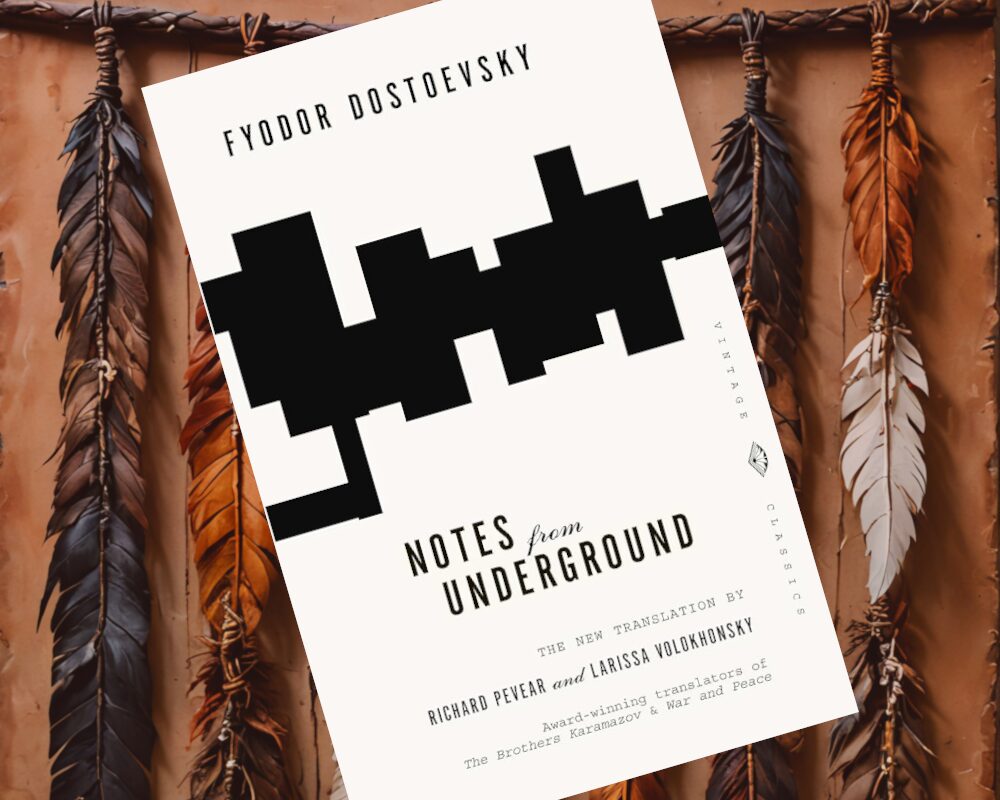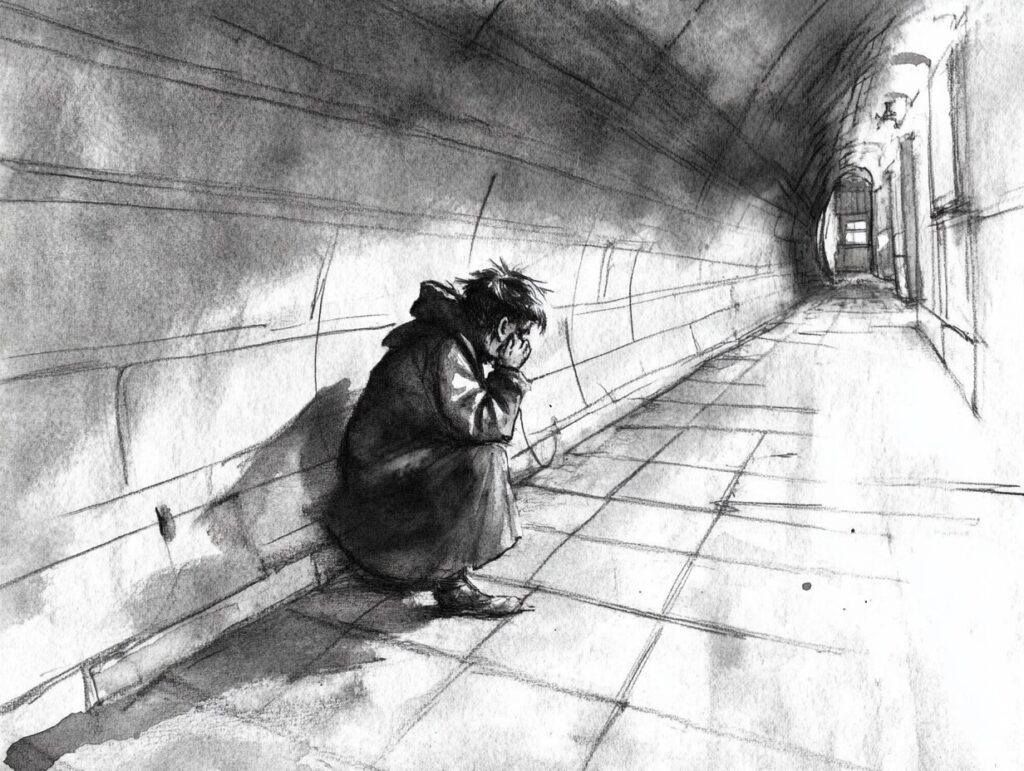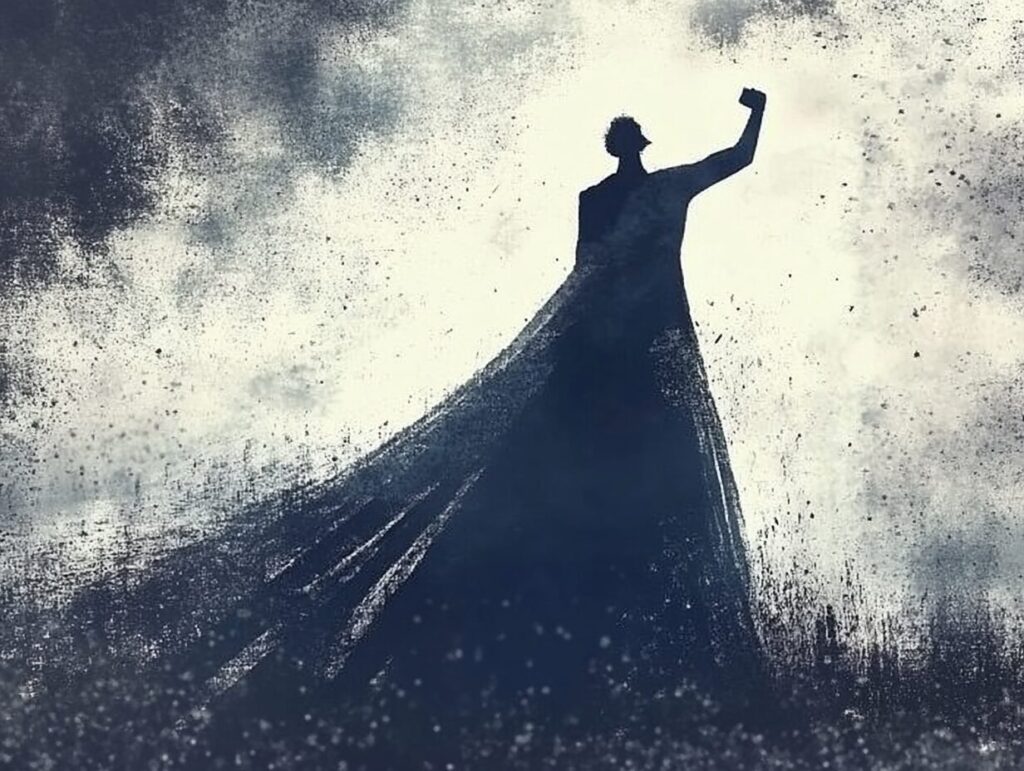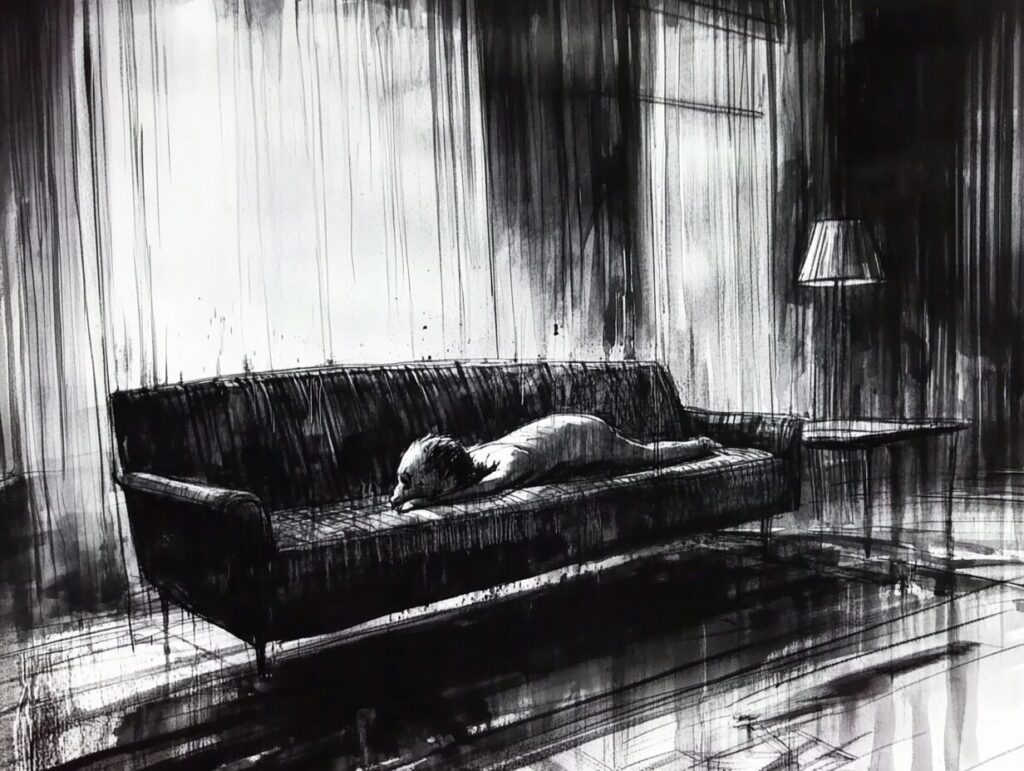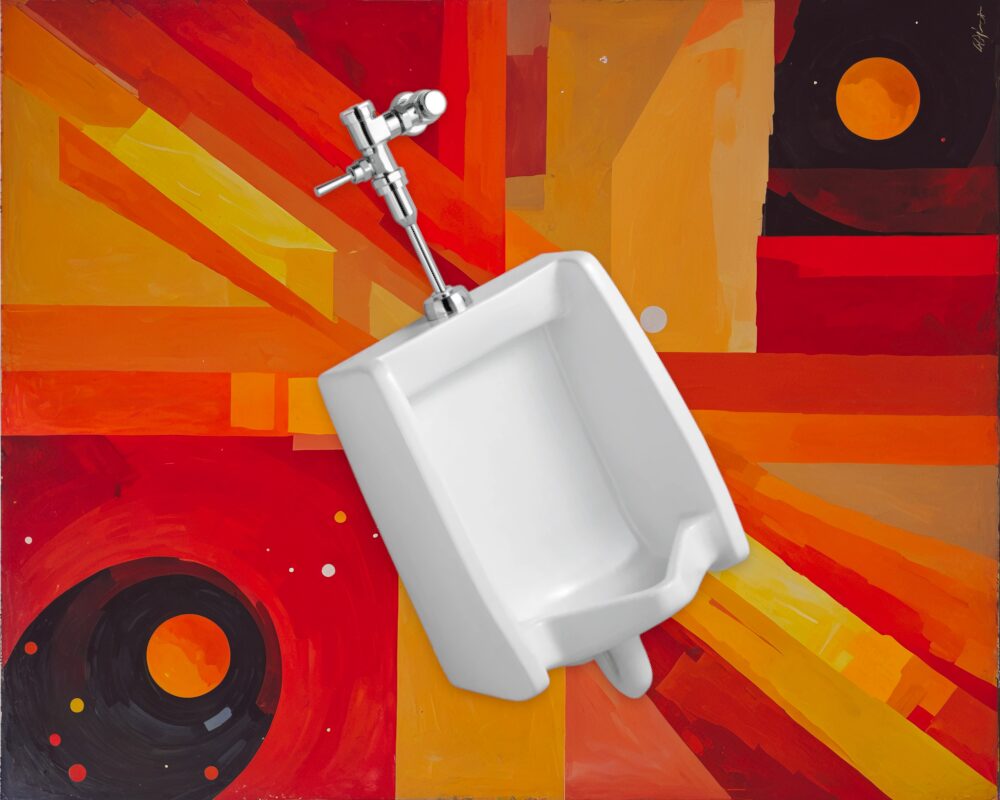
I gave in this week and finally paid for a subscription to MidJourney, the AI-powered image generator.
To be honest, I’m not a huge fan of AI art. I agree with most artists when they say that we should use AI to do the mundane tasks while humans get to make the art; but the side of me that’s into computer science finds this technology too fascinating not to play with.
While I’m curious about how the “algorithm” generates images (amongst other media), I recognize that most of what AI generates is hot garbage.
(Although, I will say that Obscurest Vinyl over on the YouTube has AI bumping out some real bangers.)
Imagine That
My initial plan for incorporating AI art into this blog was simple: I needed to generate dumb little images that would break up the text to fit with the particular voice I’m trying to cultivate: Using the visual elements of click-bait articles while having well-written, punchy paragraphs. Something snarky that people wouldn’t mind reading on a phone or a computer screen.
Like if Kurt Vonnegut wrote for Buzzfeed.
Heidi-ho!

I’m no Vonnegut, and I would hazard a guess that most Buzzfeed writers can sling together a snappier blog post than I can, but it’s good to have goals.
Anywho, when this whole AI art thing started popping off a few years ago, it caught my attention because of what it was doing algorithmically. For years and years, getting a computer to parse language was a bit of a holy grail. Then, BAM, all of a sudden not only can computers parse language, they can generate visual images from it!
Holy shit!
Even if you think these AI image generators are stealing from artists, which is a fair point, that is an astounding leap in software technology. And it only gets cooler the deeper into it you dig.
The old adage “Garbage In, Garbage Out” immediately sprang to my mind, and I wondered what these generators would do if they were given a bunch of nonsense.
What, for example, would they make of the first stanza of “Jabberwocky?“
’Twas brillig, and the slithy toves
Did gyre and gimble in the wabe:
All mimsy were the borogoves,
And the mome raths outgrabe...
The answer, according to Stable Diffusion, is this:
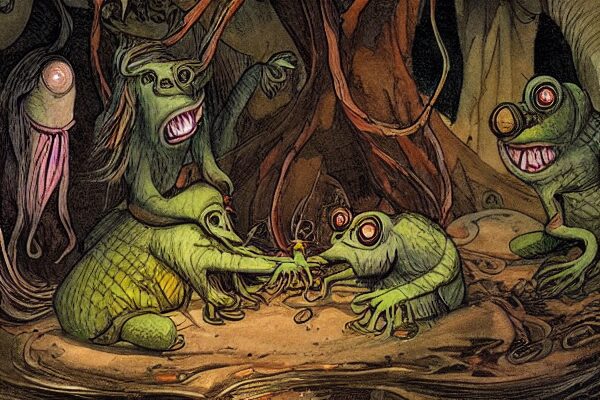
All I did was copy the first stanza, paste it into the prompt box, and hit “Generate.” The above image is what came out. And it’s dazzling! Every bit as nonsensical as the poem itself, but for entirely different reasons.
Even the people who wrote the software can’t explain how or why a computer spit out that particular image when given words like “brillig” and “gimble in the wabe.” In a sense that is almost too real to be comfortable, that image is based on the hallucinations of a machine.
That is astounding. And maybe a little unnerving.
Still, it’s nothing to be afraid of. Even if you’re an artist, you should think of this whole AI thing as little more than a fad, because that’s ultimately what it is. We’re a long way from having AI generate anything of actual, lasting beauty (if that’ll ever happen at all) and there will always be a demand for good, human-made art.
Paragraphs as Prompts
The images I’ve been generating have mostly been inspired by Stephen Gammell, the artist who drew all the illustrations for the classic, “Scary Stories to Tell in the Dark” series. (And who has other cool art available for purchase.) This is mostly due to nostalgia, but it’s also because I don’t want to pick a color scheme, so black and white images work well.
Ultimately, though, what I want to do is plug in entire paragraphs from books and stories to see what kinds of images applications like MidJourney and Stable Diffusion will dream up.
Let’s give it a try, shall we? Using a paragraph from the author I’m currently reading — Clarice Lispector, the Brazilian short story author whose “Collected Stories” is an absolute blast.
Here’s a paragraph from her 1952 story, “Love.”
And, if she had passed through love and its hell, she was now combing her hair before the mirror, for an instant with no world at all in her heart. Before going to bed, as if putting out a candle, she blew out the little flame of the day.
Here’s what Stable Diffusion, run on my own computer, makes of that:

And don’t forget this zinger:

The problem with Stable Diffusion is that it’s pretty dumb. As you can see by that last image, it latched onto some of the nouns and just . . . didn’t know what to make of them. Is she wearing a candle as a hat? And is she rubbing . . . wax on her face?
Stable Diffusion also makes everyone have eyes like a stroke victim and can’t draw hands.
Here’s the same Clarice Lispector prompt put into MidJourney:

I feel like that one actually captures the spirit of the paragraph. Somewhat pensive, exhausted; no physical candle present but definitely showing a metaphorical “blowing out the day.”
And this one…

…depicts a witch literally trying blow out the little flame of the day?
Beats me.
Whatever the case, MidJourney definitely produces better results than Stable Diffusion. And it does so without making my computer run hotter than a firecracker.
Looking Ahead
I’ve got several books picked out for the next week and beyond. Clarice Lispector is first, followed by Dodie Smith and a few “classics” I was able to borrow from my school.
I also just got done updating the 1,000 Books to Read Before You Die page! The list is complete and organized and I’ve underlined everything I’ve already read already.
Oh, and I’m on BlueSky now. Follow me if you’d like to hear more about what I’m reading or to see pictures of my cat.
